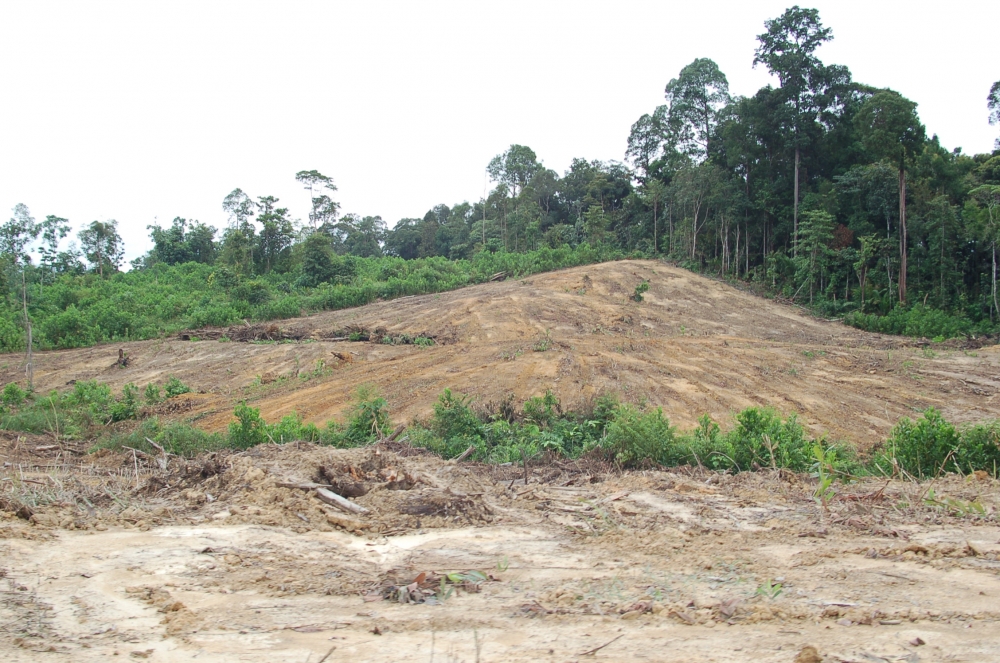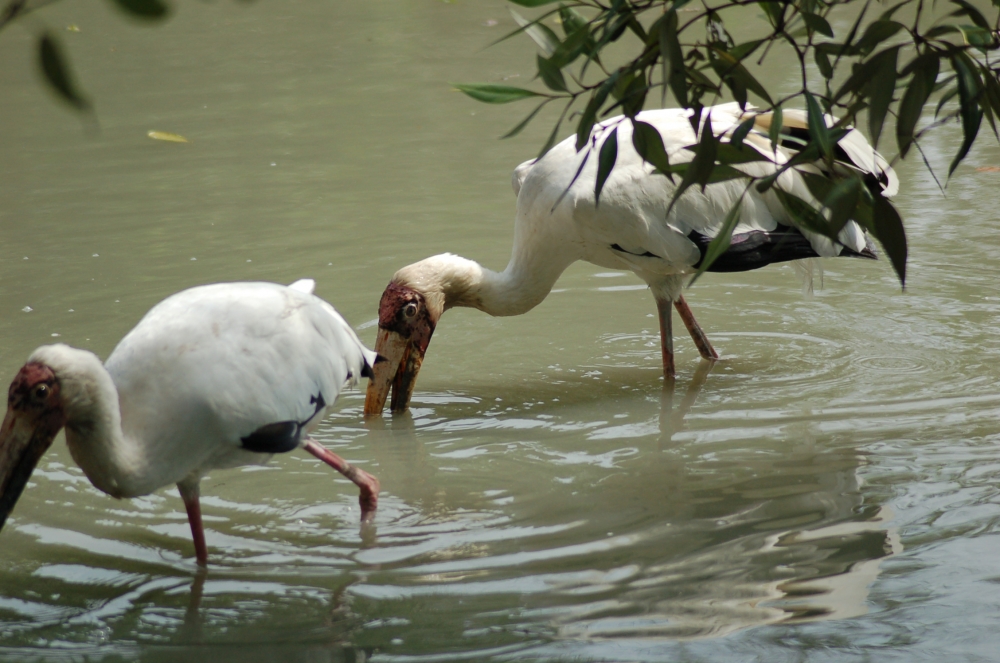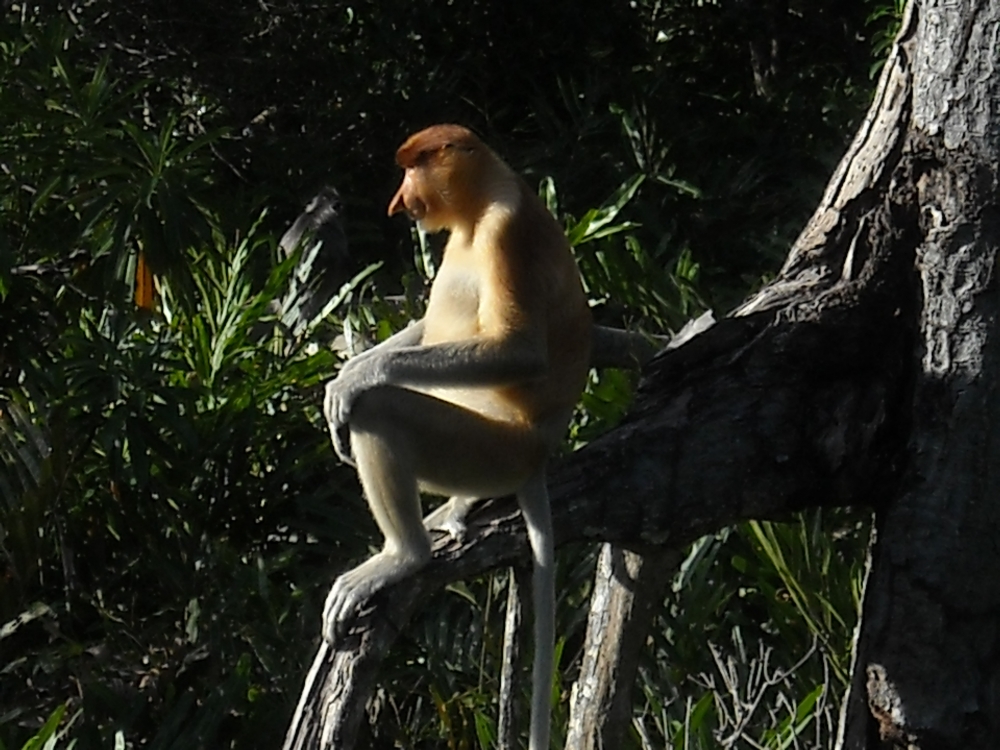Impacts of anthropogenic activities on biodiversity
Mohamed Zakaria Hussin
Malaysia is bestowed with splendid landscape and rich in biodiversity, and is ranked as a 12th world’s mega-diverse country in the world. It has been shown that around 60% of the total land area is occupied by permanent reserved forest, state land forests, national parks, and wildlife sanctuaries. For the record, flora encompasses 17,631 species, including 377 algae, 1,387 briofit, 1,600 ferns and its families, 61 gymnosperms, 4,180 monocotyledons and 10,026 dicotyledons while fauna comprises of 9,563 species of fauna, including 480 mammals, 742 birds, 242 amphibians, 567 reptiles, 590 freshwater fishes, over 500 species of marine fish and more than 150,000 species of invertebrates. Unfortunately, many of the species are on the brink of extinction (e.g. Sumatran Rhinoceros) and more than 18% are classified as threatened and 3.5% as endangered. These species need special attention, such as habitat restoration, establishment of protected areas, management of a forested area on a sustainable basis and special land management practice.
Malaysia is bestowed with splendid landscape and rich in biodiversity, and is ranked as a 12th world’s mega-diverse country in the world. It has been shown that around 60% of the total land area is occupied by permanent reserved forest, state land forests, national parks, and wildlife sanctuaries. For the record, flora encompasses 17,631 species, including 377 algae, 1,387 briofit, 1,600 ferns and its families, 61 gymnosperms, 4,180 monocotyledons and 10,026 dicotyledons while fauna comprises of 9,563 species of fauna, including 480 mammals, 742 birds, 242 amphibians, 567 reptiles, 590 freshwater fishes, over 500 species of marine fish and more than 150,000 species of invertebrates. Unfortunately, many of the species are on the brink of extinction (e.g. Sumatran Rhinoceros) and more than 18% are classified as threatened and 3.5% as endangered. These species need special attention, such as habitat restoration, establishment of protected areas, management of a forested area on a sustainable basis and special land management practice.
Factors responsible for the loss of biodiversity
In the last five decades, anthropogenic activities had changed the ecosystems rapidly and extensively to meet the growing demand for food, water, timber, fibre, fuel and other natural products. The extensive exploitation of natural resources has benefited human beings more, while at the same time has altered the natural environment. The loss of biodiversity has devastating effects on the functions of various ecosystems. It is expected that in the next 50 years the demand for food and water will grow significantly while the number of flora and fauna species will decline and freshwater will deteriorate. Moreover, the biodiversity will be lower due to habitat loss and degradation.
The following are the major driving factors which causes the biodiversity loss and degradation:
1. Land use change will transform the natural forested areas (natural landscape) to other purposes such as establishment of agriculture areas, industrial or housing estates. Human activities through deforestation (particularly overexploitation) may cause fragmentation of different forest habitats and make them vulnerable to external pressure and cause a decline in biodiversity resources.
2. Climate change may alter the microclimate, rainfall pattern and flora structure that affect the natural habitat and behaviour of wildlife species. These species will be forced to move from lower to higher habitat elevation or latitudes that might be unsuitable for them. The species that are unable to move may become vulnerable, endangered and at risk of extinction.
3. Air pollution may affect on biodiversity resources in a variety of ways, such as acid rain, eutrophication of vegetation and climate changed through emitting greenhouse gases i.e., CO2, CH4 etc. in the atmosphere. These changes will also affect on the viability, persistence and resilience of ecosystems that ultimately affect the ecosystem services and function.
4. Water pollution may bring abrupt changes in water quality of aquatic resources which affects the fauna and flora of a particular aquatic habitat and ultimately effects on biodiversity resources.
5. Soil pollution, such as degradation of watershed areas due to deforestation may affect water quality and quantity which causes immense pressure on biodiversity.
6. Introduction of alien species suppresses and overtake the native species through vigorous growth and food competition hence degrading biodiversity.
In conclusion, anthropogenic activities will cause mass extinction and loss of the biodiversity through a various ways, such as natural habitat destruction and fragmentation through deforestation, the introduction of invasive alien species, over-harvesting of natural resources, pollution, and climate change. Human welfare will be affected directly and indirectly due to the loss of biodiversity. We depend on a healthy ecosystem that provides goods and services such as food, medicines, water purification, nutrient retention and climate regulation. Therefore, biodiversity loss may destabilize and reduce the functions and services of the ecosystems which eventually cause environmental disasters such as drought and floods.
The following are the major driving factors which causes the biodiversity loss and degradation:
1. Land use change will transform the natural forested areas (natural landscape) to other purposes such as establishment of agriculture areas, industrial or housing estates. Human activities through deforestation (particularly overexploitation) may cause fragmentation of different forest habitats and make them vulnerable to external pressure and cause a decline in biodiversity resources.
2. Climate change may alter the microclimate, rainfall pattern and flora structure that affect the natural habitat and behaviour of wildlife species. These species will be forced to move from lower to higher habitat elevation or latitudes that might be unsuitable for them. The species that are unable to move may become vulnerable, endangered and at risk of extinction.
3. Air pollution may affect on biodiversity resources in a variety of ways, such as acid rain, eutrophication of vegetation and climate changed through emitting greenhouse gases i.e., CO2, CH4 etc. in the atmosphere. These changes will also affect on the viability, persistence and resilience of ecosystems that ultimately affect the ecosystem services and function.
4. Water pollution may bring abrupt changes in water quality of aquatic resources which affects the fauna and flora of a particular aquatic habitat and ultimately effects on biodiversity resources.
5. Soil pollution, such as degradation of watershed areas due to deforestation may affect water quality and quantity which causes immense pressure on biodiversity.
6. Introduction of alien species suppresses and overtake the native species through vigorous growth and food competition hence degrading biodiversity.
In conclusion, anthropogenic activities will cause mass extinction and loss of the biodiversity through a various ways, such as natural habitat destruction and fragmentation through deforestation, the introduction of invasive alien species, over-harvesting of natural resources, pollution, and climate change. Human welfare will be affected directly and indirectly due to the loss of biodiversity. We depend on a healthy ecosystem that provides goods and services such as food, medicines, water purification, nutrient retention and climate regulation. Therefore, biodiversity loss may destabilize and reduce the functions and services of the ecosystems which eventually cause environmental disasters such as drought and floods.

Plate 1. Deforestation for other land use purposes will reduce our biodiversity

Plate 2. We will lose this species (Milky stork - Mycteria cinerea) if its mangrove habitat is not protected

Plate 3. Overexploitation will affect many of our unique and endangered species
 |
||||||||||||||||
| Faculty of Forestry and Environment, Universiti Putra Malaysia | ||||||||||||||||
| @forenvupm | @forenvupmi | 603-9769 7171 | https://forenv.upm.edu.my | dean.forenv@upm.edu.my | ||||||||||||
